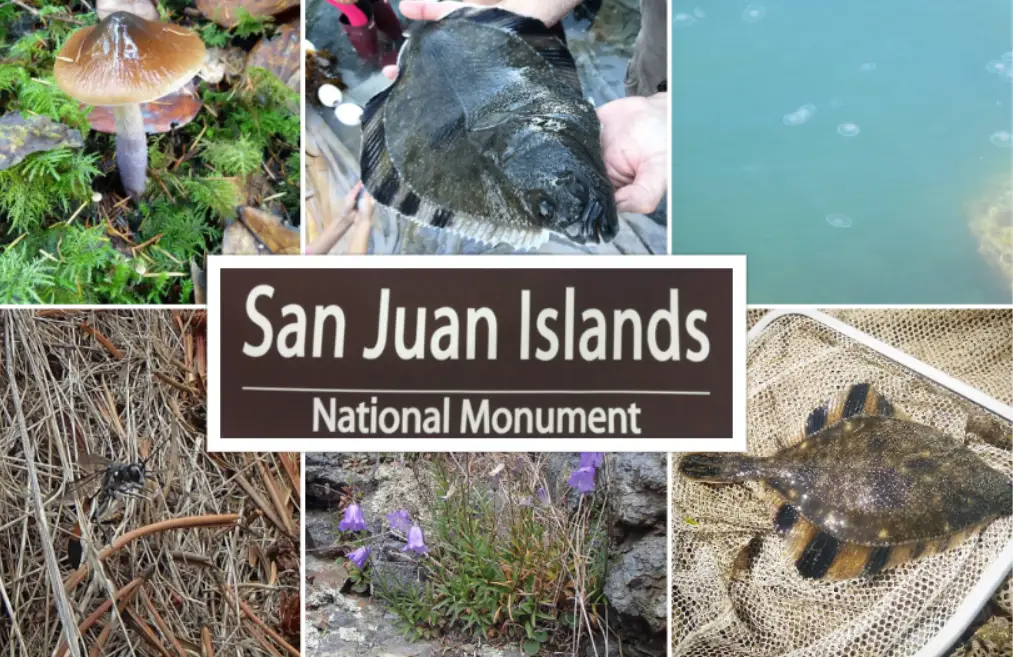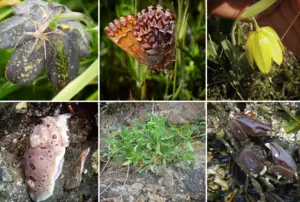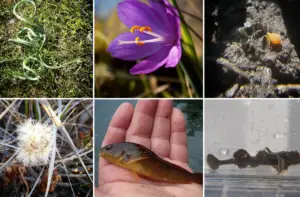San Juan Islands National Monument : Interesting Facts, History & Travel Guide

- By
- Aparna Patel
- |
- 13 Apr, 2023
- |

Nestled in the heart of the Pacific Northwest lies the San Juan Islands National Monument, a breathtaking collection of over 450 islands, rocks, and pinnacles that have captivated travelers for centuries. These islands are steeped in history, from their ancient Native American roots to their pivotal role in the 19th century fur trade.
Today, visitors can enjoy a wide range of outdoor activities, from kayaking and hiking to whale watching and beachcombing. In this travel guide, we’ll delve into the fascinating history and geography of the San Juan Islands, share some interesting facts, and provide tips for planning your visit to this unique and stunning destination. So grab your map and let’s explore the San Juan Islands National Monument together!
Table of Contents
Interesting facts about San Juan Islands National Monument
- The San Juan Islands National Monument is located in the Salish Sea, off the coast of the Pacific Northwest in the United States.
- The monument encompasses over 970 acres of protected land, including 75 miles of shoreline.
- The San Juan Islands National Monument was created in 2013 by President Barack Obama under the authority of the Antiquities Act.
- The area is home to a wide variety of wildlife, including bald eagles, harbor seals, orcas, and a wide variety of bird species.
- The San Juan Islands are known for their unique geology, including rare rock formations, fossils, and glacial deposits.
- The monument includes several historic lighthouses, including the Cattle Point Lighthouse and the Lime Kiln Lighthouse.
- The San Juan Islands were once home to several Native American tribes, including the Lummi, Samish, and Swinomish people.
- The San Juan Islands are a popular destination for recreational activities such as kayaking, hiking, and whale watching.
- The monument is managed by the Bureau of Land Management, in cooperation with the National Park Service and other local agencies.
- The San Juan Islands National Monument is an important part of the Pacific Northwest’s natural and cultural heritage, and a valuable resource for conservation and recreation.
San Juan Island National Historical Park trails
- American Camp Trail: This 1.5-mile trail takes hikers through historic American Camp, the site of a military camp established by American soldiers during the Pig War of 1859. The trail offers stunning views of Griffin Bay and Mount Finlayson.
- English Camp Trail: This 2.5-mile loop trail explores English Camp, a former British military camp established in 1860. Along the way, hikers will pass through lush forests and open meadows, with views of Garrison Bay and the Olympic Mountains.
- Young Hill Trail: This challenging 3.5-mile hike takes visitors to the top of Young Hill, the highest point on San Juan Island. The trail winds through old-growth forest and open meadows, with sweeping views of the island and surrounding waters.
- Bell Point Trail: This easy 0.8-mile trail takes visitors along the shoreline of Westcott Bay to Bell Point, offering stunning views of the bay and nearby islands.
- Mount Finlayson Trail: This steep 1.5-mile trail leads to the summit of Mount Finlayson, offering panoramic views of the surrounding islands and waterways.
No matter which trail you choose, be sure to bring plenty of water and wear comfortable shoes. And don’t forget your camera, as the San Juan Islands offer some of the most picturesque scenery in the Pacific Northwest!
Information & History of San Juan Islands National Monument
The San Juan Islands National Monument is a protected area located in the San Juan archipelago of the Salish Sea, off the coast of the Pacific Northwest in the United States. The monument encompasses over 970 acres of protected land, including 75 miles of shoreline, and was created in 2013 by President Barack Obama under the authority of the Antiquities Act.
The San Juan Islands have a rich history, dating back to the time when the islands were inhabited by the Lummi, Samish, and Swinomish tribes. These tribes relied heavily on the resources provided by the sea, and the islands served as an important trading hub for the tribes of the region.
In the late 18th and early 19th centuries, the San Juan Islands became a center of the fur trade, with traders from Russia, Britain, and the United States all competing for control of the region. In 1846, a treaty between the United States and Great Britain established the boundary between the two countries at the 49th parallel, but left the ownership of the San Juan Islands in dispute. In 1859, a conflict known as the Pig War broke out between the United States and Great Britain over a pig that had been shot by an American farmer on San Juan Island. The dispute was eventually settled peacefully in 1872 when an arbitration commission awarded the islands to the United States.
The San Juan Islands also played an important role in the development of the Pacific Northwest’s shipping industry, and several lighthouses were built on the islands in the late 19th and early 20th centuries to guide ships through the treacherous waters of the Salish Sea.
Today, the San Juan Islands National Monument is managed by the Bureau of Land Management, in cooperation with the National Park Service and other local agencies. The monument is home to a wide variety of wildlife, including bald eagles, harbor seals, orcas, and a wide variety of bird species, and is a popular destination for recreational activities such as kayaking, hiking, and whale watching. The San Juan Islands National Monument is an important part of the Pacific Northwest’s natural and cultural heritage, and a valuable resource for conservation and recreation.
Read More:
- San Gabriel Mountains National Monument : Interesting Facts, History
- Salinas Pueblo Missions National Monument : Interesting Facts, History & Travel Guide
- Salinas Pueblo Missions National Monument : Interesting Facts, History
- Russell Cave National Monument : Interesting Facts, History & Travel Guide
- Rose Atoll Marine National Monument : Interesting Facts, History
- Rainbow Bridge National Monument : Interesting Facts, History & Travel Guide
- President Lincoln and Soldiers’ Home : Interesting Facts, History
Travel Guide for San Juan Islands National Monument
The San Juan Islands National Monument is a beautiful and unique destination in the Pacific Northwest, offering visitors the opportunity to explore a diverse landscape of forests, beaches, and rocky shores, and to observe a wide variety of wildlife, including orcas, bald eagles, and harbor seals. Here are some travel tips to help you plan your visit:
- Getting there: The San Juan Islands are accessible by ferry, private boat, or small plane. The most common way to get to the islands is by ferry from Anacortes, Washington. Reservations for the ferry are recommended, especially during the summer months when demand is high.
- When to go: The San Juan Islands National Monument can be visited year-round, but the best time to go is during the summer months when the weather is warm and dry, and the wildlife is most active. Keep in mind that the islands can get crowded during peak season, so plan accordingly.
- What to do: The San Juan Islands National Monument offers a wide variety of recreational activities, including hiking, kayaking, whale watching, and beachcombing. Some of the most popular attractions in the monument include Lime Kiln Point State Park, which is known for its scenic views and excellent whale watching opportunities, and Cattle Point, which offers spectacular views of the Salish Sea.
- Where to stay: There are a variety of lodging options on the San Juan Islands, including hotels, bed and breakfasts, and vacation rentals. Popular towns to stay in include Friday Harbor and Roche Harbor, which offer a variety of dining, shopping, and recreational activities.
- What to bring: When visiting the San Juan Islands National Monument, it’s important to bring appropriate clothing and gear for the activities you plan to do. This may include hiking shoes, rain gear, a hat and sunscreen, binoculars, and a camera. If you plan to go kayaking or boating, be sure to bring a life jacket and other safety equipment.
Overall, the San Juan Islands National Monument is a beautiful and unique destination that offers visitors the opportunity to explore a diverse landscape and observe a wide variety of wildlife. With a little planning and preparation, you can have an unforgettable experience on these beautiful islands.
More Post:
- Pipe Spring National Monument : Interesting Facts, History & Travel Guide
- Petroglyph National Monument : Interesting Facts, History & Travel Guide
- Organ Pipe Cactus National Monument : Interesting Facts, History & Travel Guide
- Prehistoric Trackways National Monument : Interesting Facts, History & Travel Guide
- Pompeys Pillar National Monument : Interesting Facts, History & Travel Guide
FAQ About San Juan Islands National Monument
Q: When was the San Juan Islands National Monument created?
A: The monument was created in 2013 by President Barack Obama under the authority of the Antiquities Act.
Q: What kind of wildlife can be found in the San Juan Islands National Monument?
A: The monument is home to a wide variety of wildlife, including bald eagles, harbor seals, orcas, and a wide variety of bird species.
Q: What are some popular recreational activities in the San Juan Islands National Monument?
A: Popular activities in the monument include hiking, kayaking, whale watching, and beachcombing.
Q: How can I get to the San Juan Islands National Monument?
A: The islands are accessible by ferry, private boat, or small plane. The most common way to get to the islands is by ferry from Anacortes, Washington.
Q: Is there lodging available on the San Juan Islands?
A: Yes, there are a variety of lodging options on the islands, including hotels, bed and breakfasts, and vacation rentals.
Q: Can I visit the San Juan Islands National Monument year-round?
A: Yes, the monument can be visited year-round, but the best time to go is during the summer months when the weather is warm and dry, and the wildlife is most active.
Q: Are there any guided tours available in the San Juan Islands National Monument?
A: Yes, there are a variety of guided tours available on the islands, including whale watching tours, kayaking tours, and hiking tours.
Search Posts
Latest posts
-
4 Mar, 2024
Why are there no seat belts on trains?
-
5 Mar, 2024
Passing through airport security with autism
Popular posts
-
5 Mar, 2024
Why prohibit engine braking?
